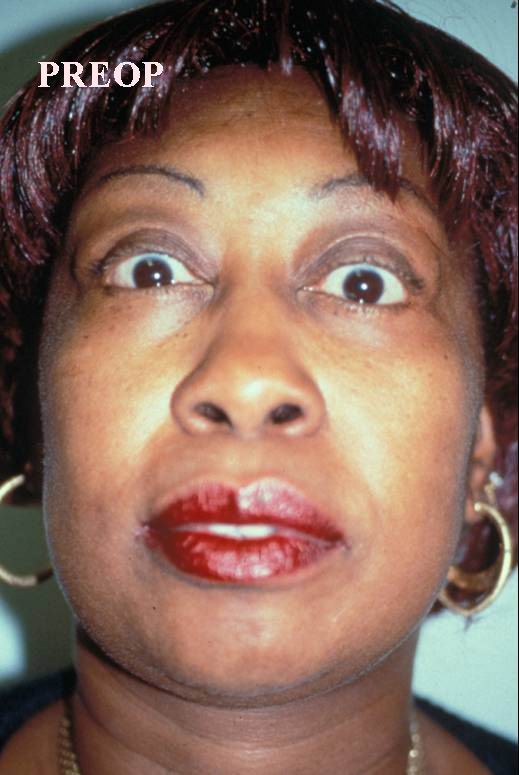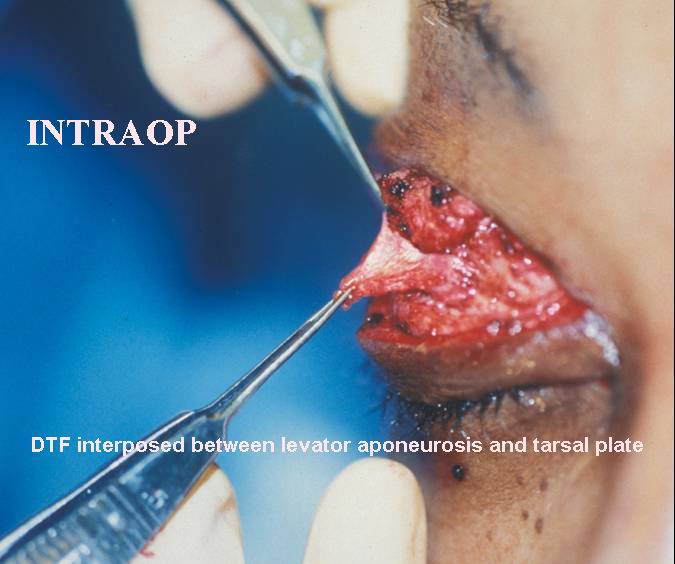Sunday, October 8, 2006
10748
Deep Temporal Fascia: A Novel Spacer Material for Use in Repair of Upper Lid Retraction
Purpose: Upper eyelid retraction may occur as a manifestation of infiltrative disease, previous surgery, or trauma. It is associated with dry eye syndrome and corneal compromise. We describe the use of deep temporal fascia (DTF) as an autologous upper lid spacer graft. Coupled with modified levator recession, this technique provides an effective method for upper lid lengthening regardless of retraction etiology.
Methods: Records of 15 patients (22 lids) treated by a single surgeon from 1999-2005 were retrospectively reviewed. Ten females and five males, ages 26-78, were included. Dry eye symptoms, scleral show, lagopthalmos and keratopathy were evaluated. Each patient underwent slit lamp examination and a Shirmer's test. All repairs were performed via a lid crease incision. Following harvest, a DTF autograft was interposed between the levator aponeurosis and tarsal plate. Five patients underwent concurrent lower lid procedures.
Results: Epiphora and dry eyes were the most common preoperative symptoms. Degree of preoperative scleral show and lagopthalmos were 1.6 ± 0.7 mm and 2.0 ± 0.6 mm respectively. Every patient experienced complete resolution of dry eye symptoms, scleral show (p<0.001) and lagopthalmos (p<0.001) following repair. Symmetry was achieved in 73% of patients. Overcorrection occurred in four lids (18%) and required lid shortening operations in three. There were no instances of undercorrection or recurrence. No major complications were noted. Graft displacement, resorption, extrusion and infection did not occur. Lid margin contour was consistently excellent. Mean operative time was 89 ± 22 minutes. Mean follow up was 30 months.
Conclusion: Our DTF interposition technique is efficacious, durable and safe. Autogenous DTF is easy to harvest and manipulate. Complications associated with other repairs, including extrusion, resorption, bulkiness, and contour irregularities are avoided. Asymmetry, in this series, resulted solely from overcorrection, and our reoperation rate (13.6%) compares favorably to other methods of repair. Overall patient satisfaction remains high. DTF interposition is a powerful technique for the repair of upper lid retraction.



